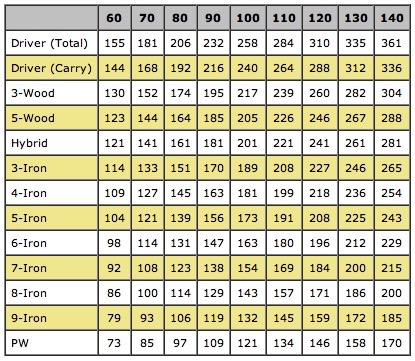Amateur women have gotten a bad rap for many years when compared with their male counterparts. The biggest complaint men will lodge against females, among other things, is slow play, but is the assessment fair?
For the most part, no.
While many courses have at the very least: ‘championship/back’ tees, ‘white/member’ tees, and senior (mens) tees, women usually have just one choice ~ and frankly, it’s probably too long.
The ‘average’ amateur female swings somewhere in the neighborhood of 65-75 miles per hour compared to the 85-95 miles per hour swinging male. Imagine the daunting feeling of rarely reaching a par 4 or par 5 in regulation? This is the reality for many women who are forced to play 5,300 + yard courses, that may seem short to the eye, but play brutally long.
Here are a few thoughts to consider (assuming a swing speed of 70 mph):
A 330 yard, par 4 = 180 Driver + 150 (perfectly struck) 3 wood for a female. This equates to a 425 yard, par 4 (Driver + 3 wood) for the average 90 mph swinging male.
The only problem? Hardly any course has their ‘white’ tee players teeing off from this distance for a par 4, with most averaging 350-390 yards. So what does the ‘average’ club do? Put their white tee male off a an ‘equitable’ 380 yard tee box vs. their 330 yard female. (Stay with me here) What does the average male play into a 380 yard hole? Driver + 6 or 7 iron. Fair? Hardly. What should the proper equitable distance be for the corresponding female? 295 yards.
Let’s try a par 5 now. For most white tee male players, 500 yards is a fairly average length three-shotter (Driver + 3 wood + SW). The corresponding female tees are usually around 440 yards for the same length hole (Driver + 3 wood + 7 iron!). Where should the tee box be placed in fairness if you were trying to replicate the same shot values? 410 yards. Assuming you are a male reader, would you like to trade places?
It gets worse when you consider most women amateurs don’t have the height or spin to hold greens when compared to men with the same iron in their hands. In truth, females should probably hit their approach shots with 1-2 clubs less to be fair…but I don’t know a single female that would ask for that kind difference. So they suffer, or more tragically, quit the game in frustration. Wouldn’t you if hitting 3-4 greens in regulation was the best you could physically do? Imagine adding 14 extra shots to every round or rarely having a chance for a birdie?
What does this translate into distance-wise per the correct tee box for the average female? About 5,000 yards (which really should be the maximum) or 20% less than the ‘white’ tee box assuming a par 72.
The following would be a good guide to work from for future female tee box builds:
Par 5: 370-410 yards
Par 4: 250-290 yards
Par 3: 90-130 yards
This would place most courses in an optimal, 4,700-5,000 yard range depending on terrain.
"One formula has a golfer estimate the average distance that his or her 5-iron shot will travel — an honest average, not the ultimate 5-iron — and then multiply that number by 36. If golfers were realistic, that would put most in the 5,300 to 6,300-yard range". - Bill Pennington
Golf industry leaders need to look in the mirror, especially when so many are bemoaning the lack of players in the game. If more courses were retro-fitted to the preceding recommendations, I firmly believe more women would stay in the game, play at a quicker, more enjoyable pace, and furthermore, would not be made to feel inferior because of the unfair demands the majority of golf courses place upon them.


